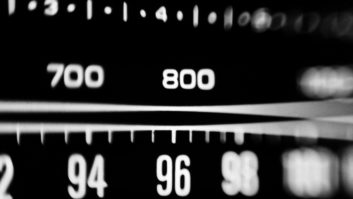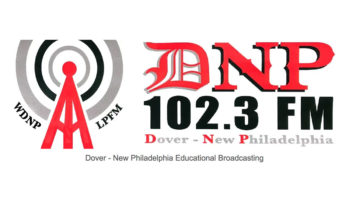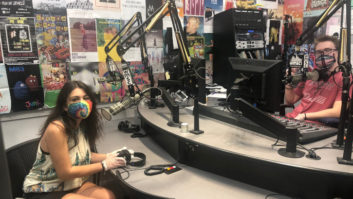Once a Revered Part of Radio Broadcasting, Sports May Be the Next Lost Format
For sports fans, this time of year is a favorite: Post-season baseball, pro football, college football and the brisk autumnal season converge to produce perhaps the best of all possible sporting spaces.
Of course, most of the audience for such events experiences them remotely, via broadcasting, rather than in person. Radio and television have built a significant part of their franchises on the carriage of sports. The immediacy of broadcasting – and in particular, the portability of radio – makes live sports perhaps the perfect content type for the medium.
Sadly, this may no longer be the case, as yet another format is challenged by competing media, and radio seems unable to answer the call with any viable defense. Live sports are no longer a safe content haven for broadcasters.
Not a level playing field
Sporting events are almost always appointment listening, which is quite different than most other radio use. So unlike a “let’s tune around and see what’s on” approach, the sports listener is bent on finding a specific program at a specific time.
Finding that sporting event you want to hear on the radio is a challenge today. While digital TV has added handy navigation features like electronic program guides (EPGs) and search capabilities, locating a particular broadcast on the radio remains a chance exercise.
In many cases a frequent radio sports listener will just know what stations usually carry particular teams’ games based on contractual arrangements; but even these seem to change in the radio business with far greater frequency of late than in the past, and they certainly are less stable over time than equivalent arrangements in the television industry.
Also, not all of a particular team’s games may be covered by a given rights deal, so even if you know the local radio station (or stations) involved, there is still an element of randomness in finding the game you want, when you want it. And of course, when traveling, even comprehensive knowledge of your home market’s affiliations won’t help you find a game on the unfamiliar airwaves of a distant city.
Today, many avid sports fans seek out their favorite events primarily on TV, and only resort to the radio when they have to due to work schedules or other obligations. For these infrequent radio sports listeners, the experience of finding a game that they know is on TV, and may be on the radio somewhere, is terribly frustrating.
There is little effective help for such seekers, since radio program listings in the newspaper are not consistent or comprehensive, and the seek/scan feature on radio receivers may skip over weaker stations where the game is carried – particularly for AM, where much sports broadcasting airs.
The truly driven fan may resort to a full-blown, manual frequency scan of the AM dial, which is time-consuming and generally leaves one feeling as if they’ve been temporarily transported to the 1930s – especially if the desired sporting event is never found. (Such a dial search also provides the fringe benefit of hearing all known types of audio interference in rapid succession, something about as pleasant as fingernails on a blackboard.)
Often an unsuccessful search occurs simply due to a corollary of Murphy’s Law, which states that an ad break will be running every time you tune to the station actually carrying the event you seek. Universally available radio metadata could solve this problem; but alas, we aren’t there yet.
Finally, even if you find the event you’re looking for, its audio quality generally is far from state-of-the-art. Production equipment on site is constrained, and backhaul paths often are bandlimited. Given that most of these feeds end up on AM broadcasts, and many on relatively low-power stations, this adds up to a pretty low-fi experience for the listener.
Meanwhile, TV sports audio is almost always in stereo or matrixed surround, and now often offered in full 5.1 discrete surround on some DTV broadcasts.
I can recall a time a few years back where there was much talk and some action on improving audio quality in radio sports broadcasts. Although some exceptions exist today, this has certainly not caught on as a broad trend. So as audio quality continues to improve for TV sports, it seems to be moving in the opposite direction on the radio.
Game over
In the digital media age, this is more than just an inconvenience to listeners; it can be a way for broadcasters to lose audience permanently.
Unlike earlier times when radio was the only way to hear live sports, today several alternatives exist, and the number of options is growing. Fans can hear live audio coverage of their favorite sporting events via satellite radio, various Internet portals and mobile phones – yes, mobile phones: Witness the deal recently inked by Sprint PCS for live audio from Major League Baseball games.
Unlike broadcast radio, most of these services are not freely provided, but for serious sports lovers a nominal fee per event (or even a monthly or season-long subscription) may not be an untenable obstacle – and such services typically are presented without commercials. Audio quality also may not be terrific, but it’s certainly no worse than the average terrestrial sports broadcast’s fidelity in most cases. (In the case of mobile phone delivery, lower audio fidelity also may not be perceived as much of a problem when the receiver is a telecom device rather than a radio.)
Perhaps more important, however, is the ability to find the desired program in the first place. Consistency of service via channel or site, and easy navigation to specific events via guides and metadata make for a far more pleasant consumer experience.
Another part of the convenience provided by these services (which radio is unlikely to ever match) is the access to more content than local broadcaster will air – extending even to all out-of-market games in many cases. With the ever-increasing mobility of Americans, the ability to hear your former home’s local pro or college teams’ games in your new market, with no blackout rules, has substantial appeal.
It doesn’t seem likely that broadcasters can do much to stop this tide. Nothing on the horizon looks helpful, with the exception of RBDS or IBOC metadata to note the game in progress while tuning, or to raise a Sports flag for somewhat improved searching.
One new feature that seems to be heading the opposite direction, in fact, is the long latency of IBOC, which will have particularly negative impact on sports broadcasts. Ibiquity has proposed a “ballgame mode” to eliminate delay in the analog signal; but this means that broadcasters will have to choose between synchronizing their analog signals to real time or to their digital signals.
Unless broadcasters can change the score soon, there may be no contest: Broadcast sports listeners will be playing ball in another court.












